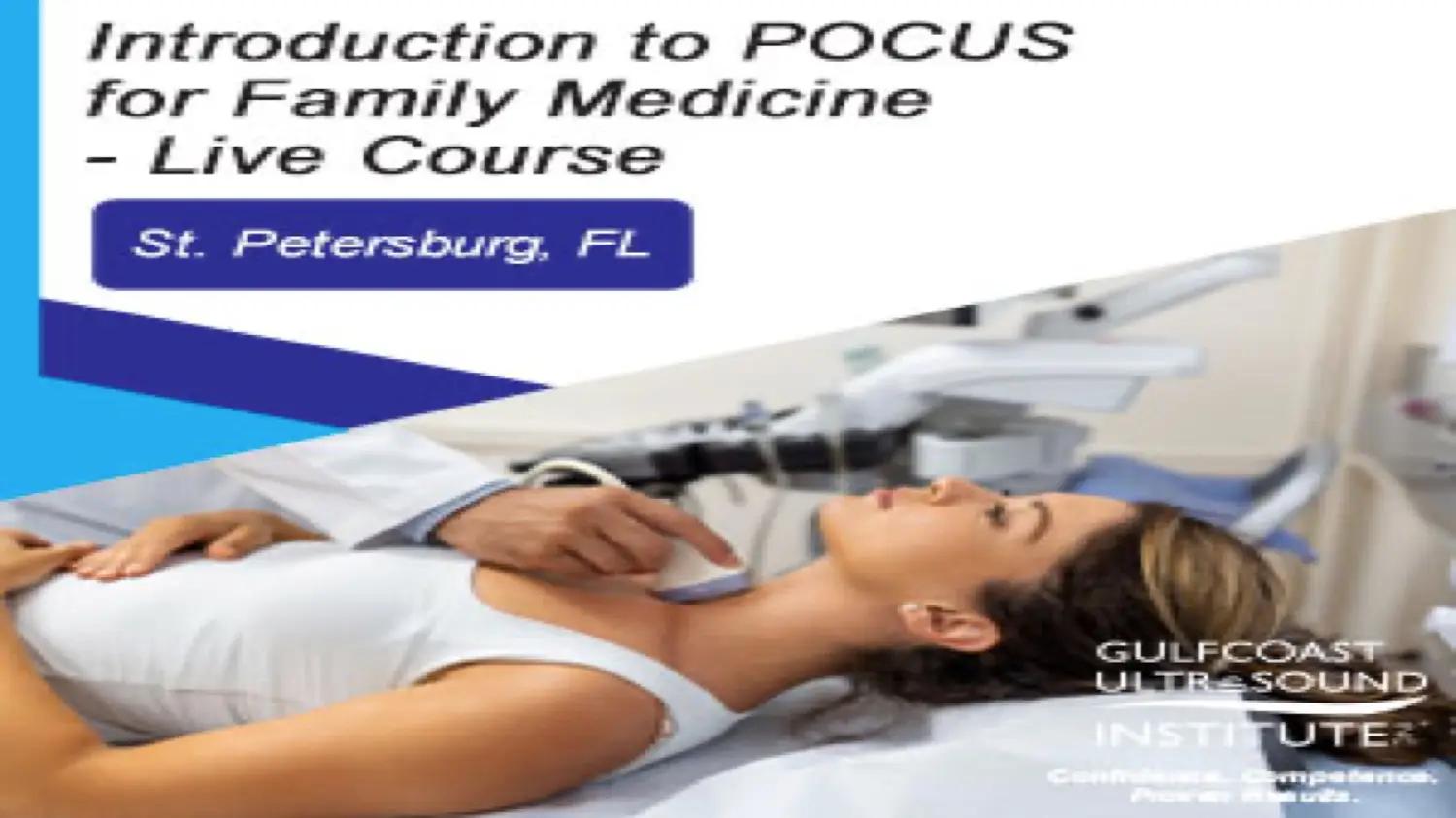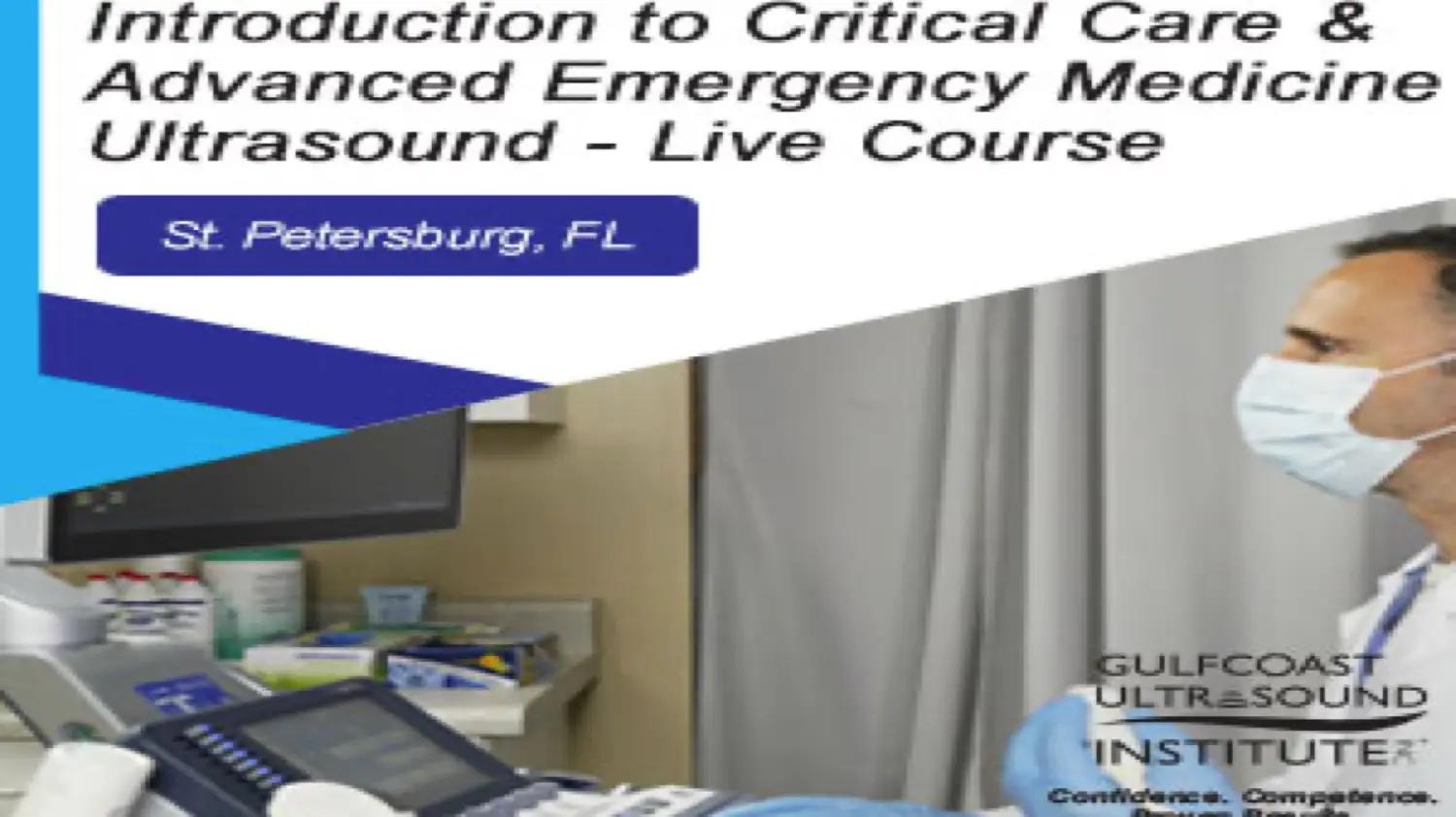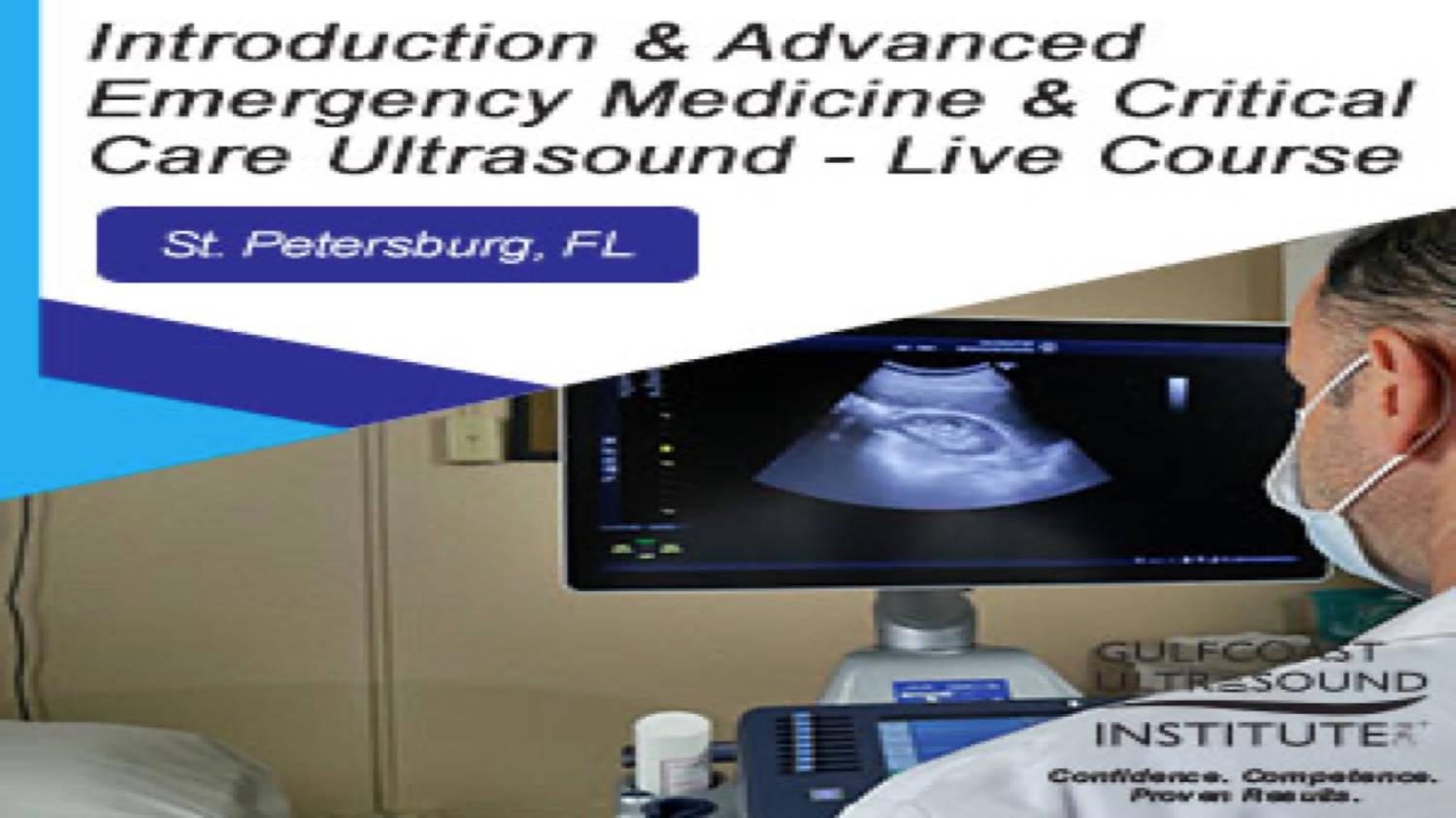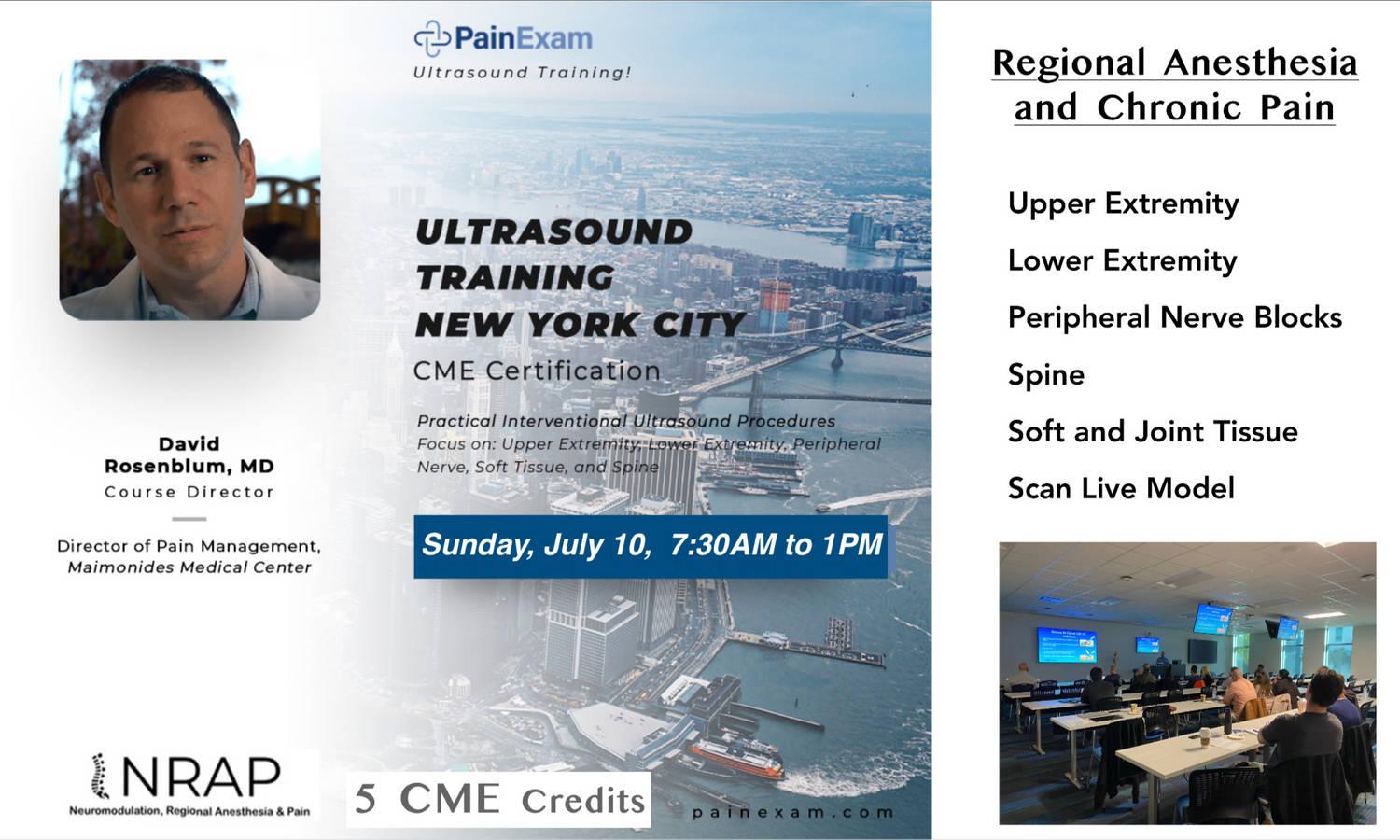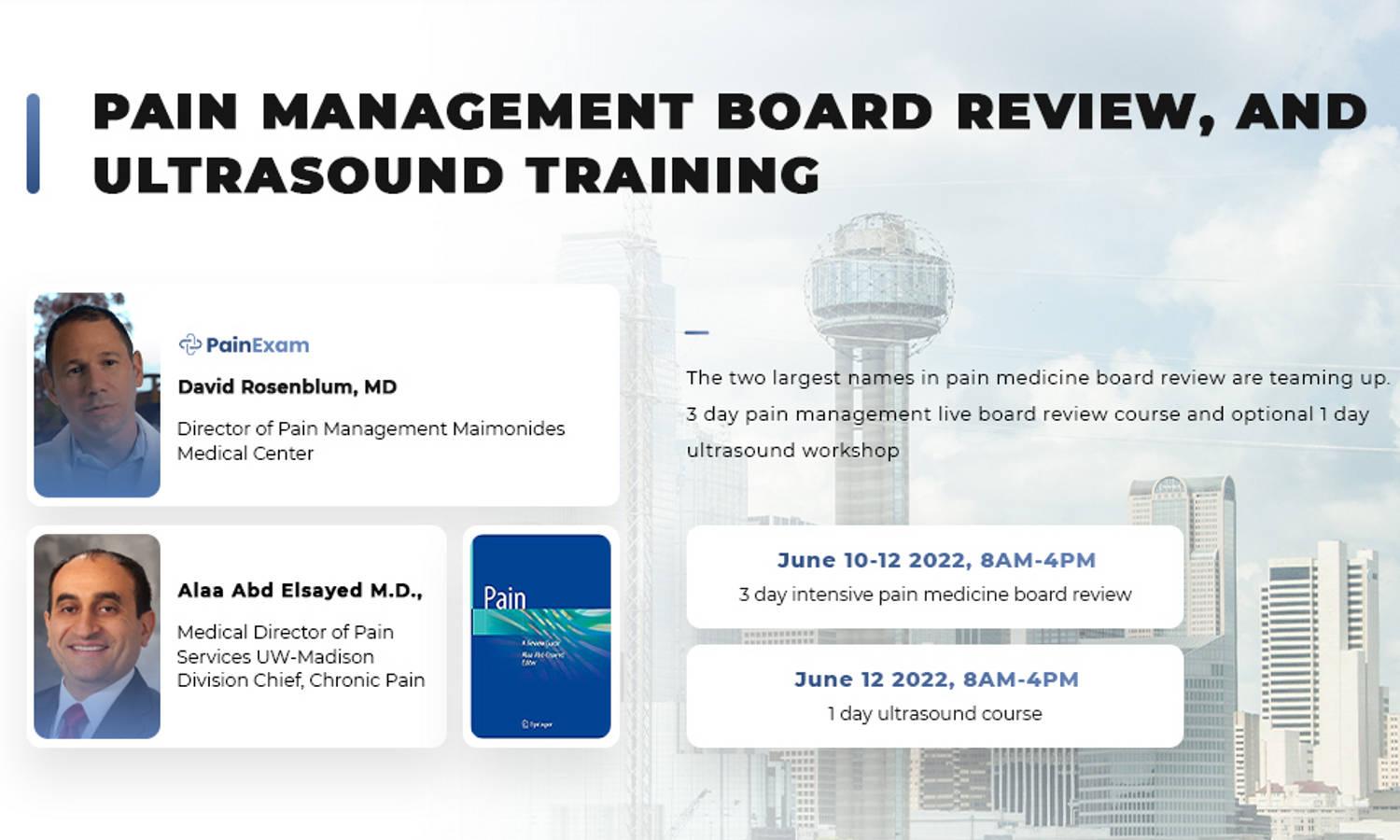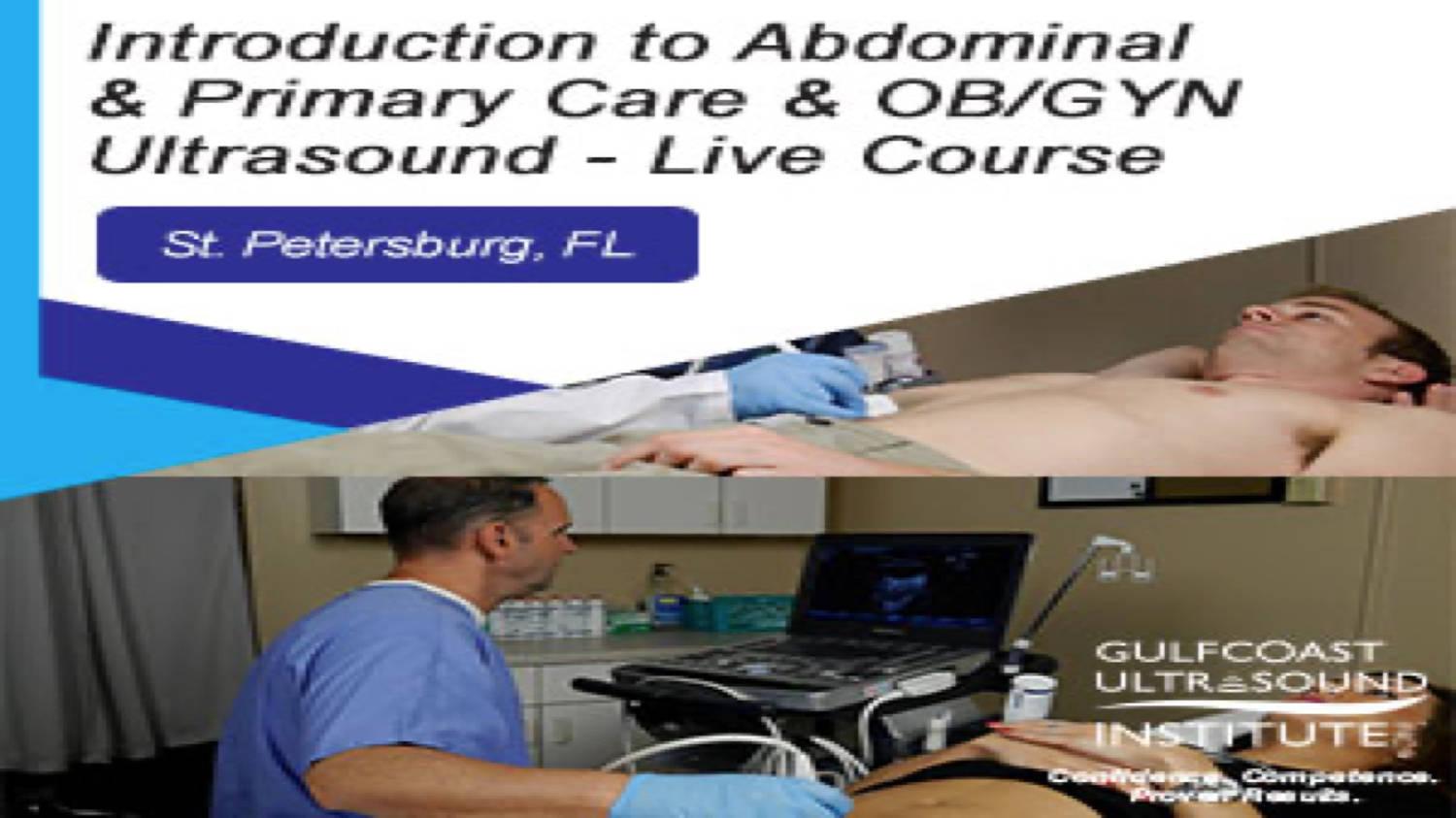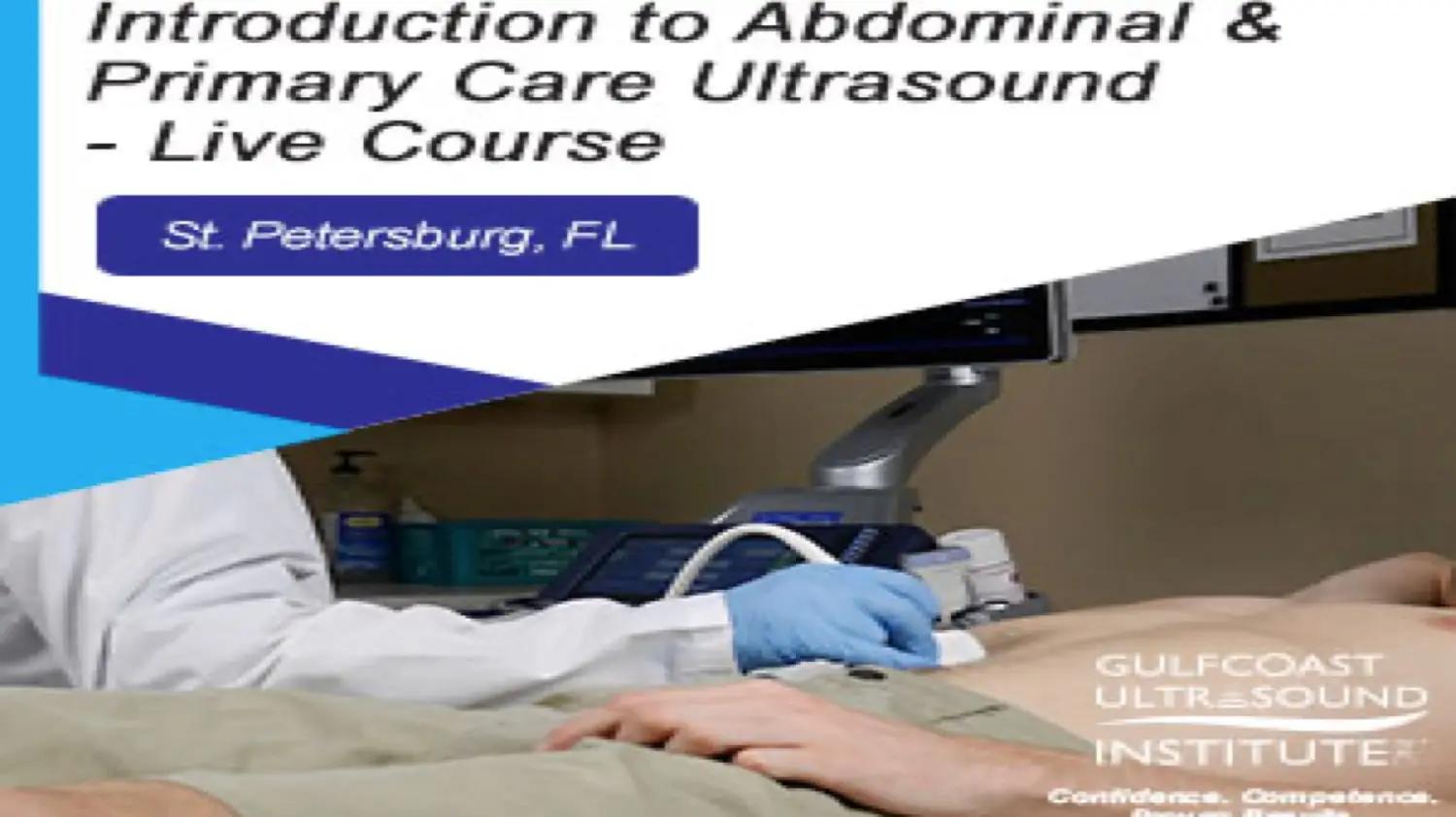
Ultrasound Guided Vascular Access and Nerve Blocks in Emergency Medicine Applications (Nov 14 - 15, 2024)
Ultrasound Guided Vascular Access and Nerve Blocks in Emergency Medicine Applications is organized by Gulfcoast Ultrasound Institute (GCUS) Inc. and will be held from Nov 14 - 15, 2024 at Gulfcoast Ultrasound Institute, St. Petersburg, Florida, United States of America.
Description:
The Blended Ultrasound-Guided Nerve Blocks for Emergency Medicine Applications Training Course is designed for Emergency Medicine Physicians seeking to integrate ultrasound-guided central and peripheral line vascular access techniques and ultrasound-guided nerve blocks for pain management, or procedural applications. This comprehensive course is taught by leading emergency medicine ultrasound experts in ultrasound guidance for vascular access and nerve blocks and incorporates comprehensive interactive online lectures and case presentations with fifteen months of unlimited access PLUS two days (12 hours) of our industry-leading 3:1 participant to faculty ratio scanning skills workshop with both standardized patient models (anatomy) and inanimate phantoms (interventional techniques). For the best ultrasound education experience, completion of the online course prior to hands-on scanning is recommended.
Learning Objectives:
• State the relationship of transducer frequency to resolution, penetration, and attenuation
• List different types of transducers and their selection for different applications
• Recognize commonly seen imaging artifacts.
• Demonstrate the participant's knowledge to better perform ultrasound-guided vascular access procedures and nerve blocks for emergency medicine applications
• Demonstrate competence to incorporate protocols, scan techniques, and interpretation criteria to improve diagnostic/treatment accuracy
• Demonstrate proper transducer manipulation and system optimization to produce diagnostic images and the use of ultrasound guidance for central and peripheral line access
• List the advantages and disadvantages of the "In-Plane" and "Out-of-Plane" ultrasound-guided vascular access techniques
• Differentiate venous vs. arterial anatomy by ultrasound
• Identify ultrasound imaging characteristics of vessels and contiguous anatomy to determine the optimal approach for vascular access
• Describe ultrasound imaging characteristics of vascular pathology that would indicate a vessel is not suitable for vascular access
• Increase the participant’s knowledge and competence to perform ultrasound-guided nerve blocks for emergency medicine applications.
• List the advantages of using ultrasound-guided nerve block techniques.
• Demonstrate imaging techniques for performing ultrasound-guided upper extremity, lower extremity, truncal, and miscellaneous nerve blocks.
• Increase confidence to incorporate protocols, scan techniques, and interpretation criteria to integrate the skills learned into clinical practice.
Topics:
• Ultrasound Imaging Fundamentals
• Fundamentals of UGVA
• Why use ultrasound guidance?
• In-plane vs out of plane techniques
• Principles of vessel differentiation and procedural tips
• Ultrasound-Guided Central Line Placement
• IJ, axillary/subclavian, and femoral vein access
• Ultrasound-Guided Peripheral Line Placement
• Antecubital vein access
• PICC Lines/Midlines
• Additional access sites
• Comments on the Pediatric Patient
• Clinical cases
• Overview, Indications, and Applications for US-Guided Nerve Blocks
• Upper Extremity Nerve Blocks: Interscalene, Supraclavicular, Infraclavicular & Axillary Brachial Plexus; Hand: Radial, Ulnar & Median; Forearm Nerves; • Superficial Cervical Plexus; Greater Auricular
• Upper Extremity Case Studies
• Lower Extremity Nerve Blocks: Femoral; Fascia Iliaca; Saphenous; Sciatic; Popliteal Sciatic; Foot & Ankle
• Truncal & Miscellaneous Blocks: TAP; PEC I, PEC II & Serratus Anterior; Erector Spinae & Intercostal; Greater Occipital; Dorsal Penile; Lipoma Plane
• Lower Extremity Case Studies
• Billing & Coding




